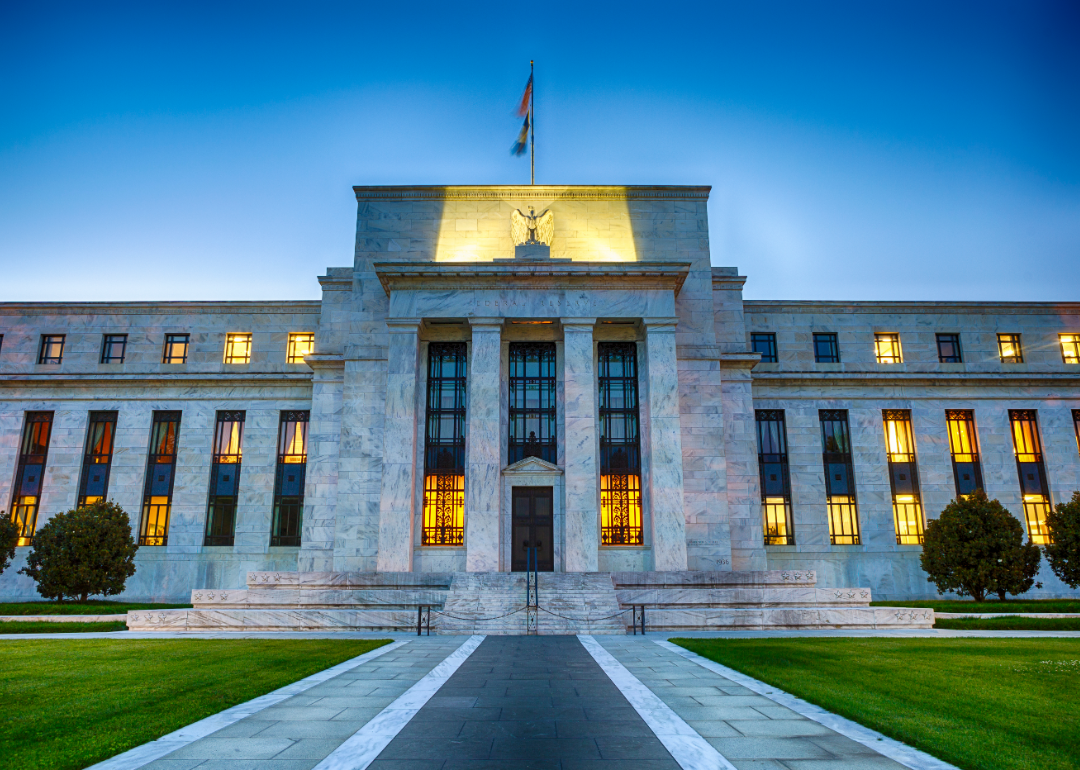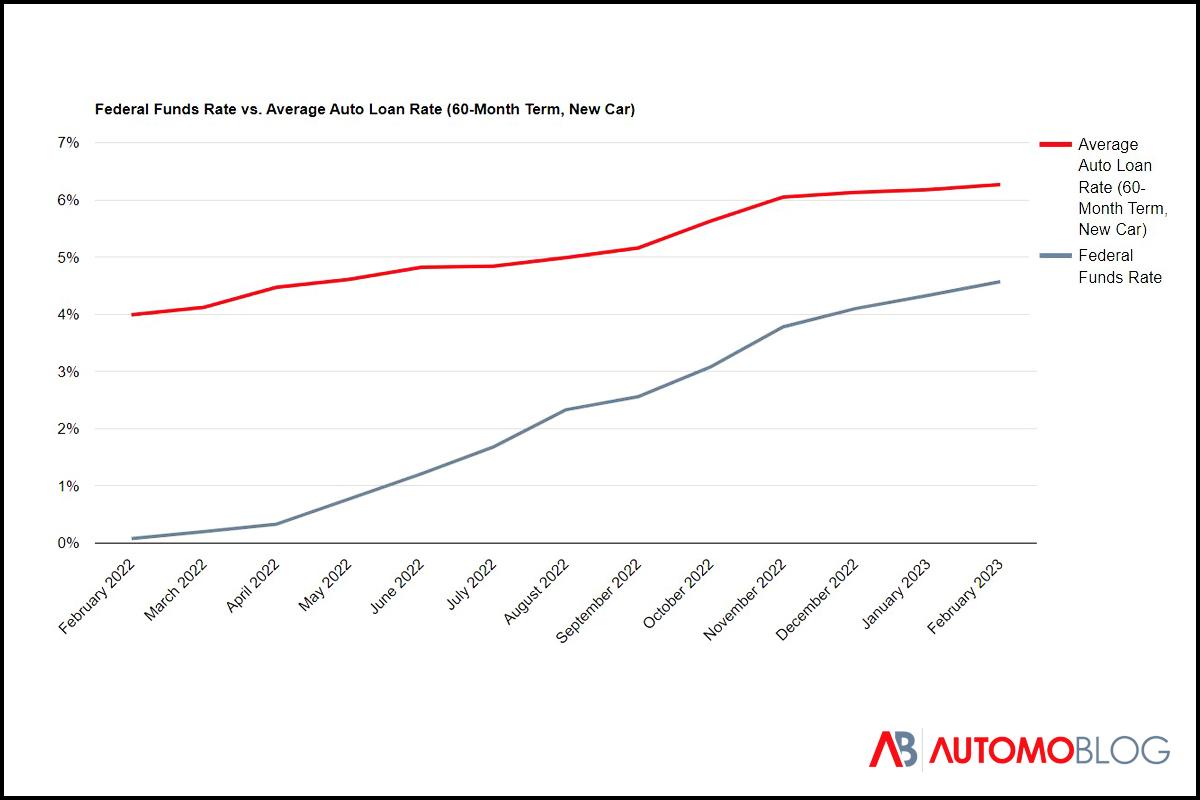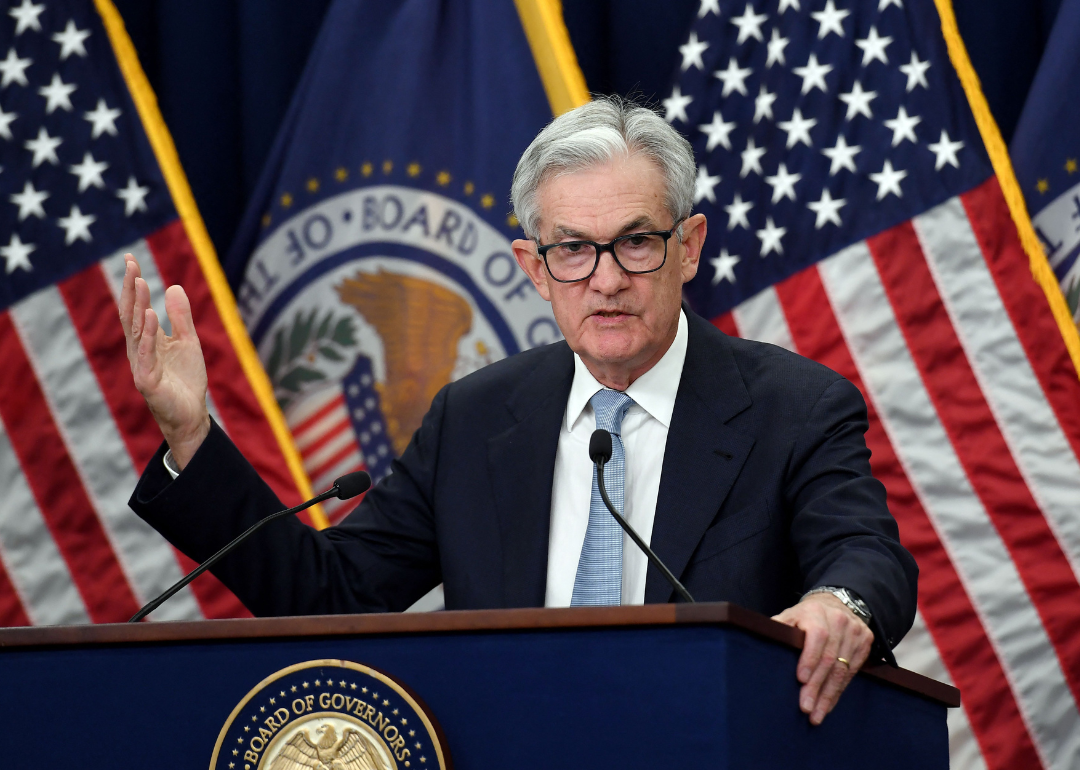
Another Fed rate hike: How high will auto loan rates get?
Another Fed rate hike: How high will auto loan rates get?
On March 22, the Federal Reserve announced another increase to the federal funds rate – this time, a hike of 25 points (0.25%). The move marks the ninth federal funds rate, or Fed rate, surge in the last year, bringing it up to 4.75-5.00%.
While politicians and economic analysts have begun to debate the necessity of these Fed rate hikes, an automotive industry already facing a crisis of affordability will have to deal with the impact of even higher annual percentage rates (APRs). With many wondering just how high auto loan rates might get, Automoblog took a closer look at economic indicators from the Federal Reserve and other sources to find when they may start to come back down.
Latest Fed rate hike pushes funds rate close to 20-year high
In mid-March of 2022, the federal funds rate sat at its lowest possible range of 0.00%-0.25%. A little more than one year later, that rate is inching towards its highest level in more than two decades.
The Fed began its current run of raising the interest rate with a 25 point hike on March 17, 2022, with the goal of tackling runaway inflation. At the time, the Consumer Pricing Index (CPI) – which measures inflation – was seeing an 8.5% increase. Increasing the cost of borrowing is a common tactic for attempting to temper the economy. Federal Reserve Chairman Jerome Powell said at the time, and has maintained since, that his goal is to get the inflation rate down to 2%.

A series of hikes
Since the initial interest rate hike, there have been eight additional increases. Over that same time, inflation has dropped to around 6%. While that is still well above Powell's stated goal of 2% inflation, the chairman is facing increasing scrutiny from politicians from both sides of the aisle in Washington.
At a hearing in early March, Senators Elizabeth Warren (D-MA) and John Kennedy (R-LA) were among several that grilled Powell. Both expressed concerns over a potential rise in unemployment resulting from increased borrowing rates. Later, Warren was critical of Powell and continued Fed rate hikes on "Meet the Press."
"I do not think he should raise rates," said Warren. "I've been in the camp for a long time that these extraordinary rate increases that he has taken on these extreme rate increases are something that he should not be doing."
In the interview, Warren also said that she felt Powell "failed" as Federal Reserve Chairman.

Auto loan rates will likely go up again
As borrowing costs for institutional lenders have increased, they have caused a significant rise in consumer auto finance rates. In February 2022, just before the first of the recent Fed rate hikes, the average interest rate for a 60-month new car loan was 3.99%. Just one year later, that average has risen to 6.27% – a 57% increase.
Increases to consumer auto lending rates has been more or less in lock step with increases to the federal funds rate. That means that the most recent hike will likely push consumer rates even higher.
This comes at a time when high finance rates are already fanning the flames of an affordability crisis for the automotive industry. Along with supply chain issues that have increased prices, higher APRs have significantly increased the cost of buying a car. That's pushed some buyers towards taking on longer loan terms with more interest costs, often into a state of negative equity. It's also pushed others out of the market completely.
Another auto loan rate increase could exacerbate these trends by reducing consumer buying power. That would add even more cause for concern for an industry already facing uncertainty from multiple directions.

When is the next interest rate hike?
While the latest Fed rate hike is less severe than some of the previous increases, it's not likely to be the last. At a March 22 press conference, Powell indicated his resolve to continue using the federal funds rate to try and tamp down inflation, despite calls from policymakers and others to reevaluate the strategy.
"Inflation remains too high and the labor market continues to be very tight," he said. "Reducing inflation is likely to require a period of below-trend growth and some softening in labor market conditions."
This means that the country will likely see at least one more rate increase within the year. But when the next rate hike will occur, or how much it will be, remains to be seen.
The Federal Reserve previously projected a "terminal rate" of 5.1%. A terminal rate is the upper threshold of the federal funds rate for a given strategy. In this case, it means that the Fed predicts that 5.1% – which represents a range of 5.00 – 5.25% – would be the limit for this round of rate increases. One more 25-point increase would put the funds rate in that range.
Currently, the Federal Open Market Committee (FOMC), which is the Fed's monetary policymaking body, is set to meet six more times this year. The next rate hike, or at least an announcement of one, will likely take place at one of those times. Those meetings are scheduled for the following dates:
- May 2-3
- June 13-14*
- July 25-26
- September 19-20*
- October 31-November 1
- December 12-13
* Meeting associated with a Summary of Economic Projections

How high can auto loan rates get?
Auto loan rates are directly correlated to the funds rate. As long as the federal interest rate continues to go up, auto finance rates will go up along with it.
In the short term, borrowers can expect to see – or may already be seeing – an increase as a result of the latest Fed rate hike. The same can be said for whenever the next interest rate hike comes. That means that the average auto loan rates for new cars could very likely exceed 7% by the end of 2023, with other types of loans seeing similar increases. The last time that happened was between 2005 and 2008.
But while current rates are high in recent context, they're still historically low when compared to almost any time more than 18 years ago. Before May 2008, average auto loan rates were only lower than the current rate for a span of nearly two years between 2003 and 2005.
When will auto loan rates come down?
There are other factors that influence auto financing rates, but the federal funds rate has the biggest impact by far. Just as it's reasonable to expect APRs to go up along with the funds rate, it's also reasonable to expect it to go down with it when that happens. And that could be relatively soon.
While Americans will likely see another Fed rate hike this year, that could be close to the last. As mentioned previously, another hike would bring the interest rate to or beyond the stated terminal rate of 5.1%. In December of 2022, the Fed indicated that it expects the funds rate to fall to 4.1% by the end of 2024 after reaching the 5.1% mark by the end of 2023.
If that holds true and the federal interest rate begins to fall, auto loan rates should start to drop shortly after. The result could be a bit of relief for both consumers and businesses in the automotive industry.
This story was produced by Automoblog and reviewed and distributed by Stacker Media.



